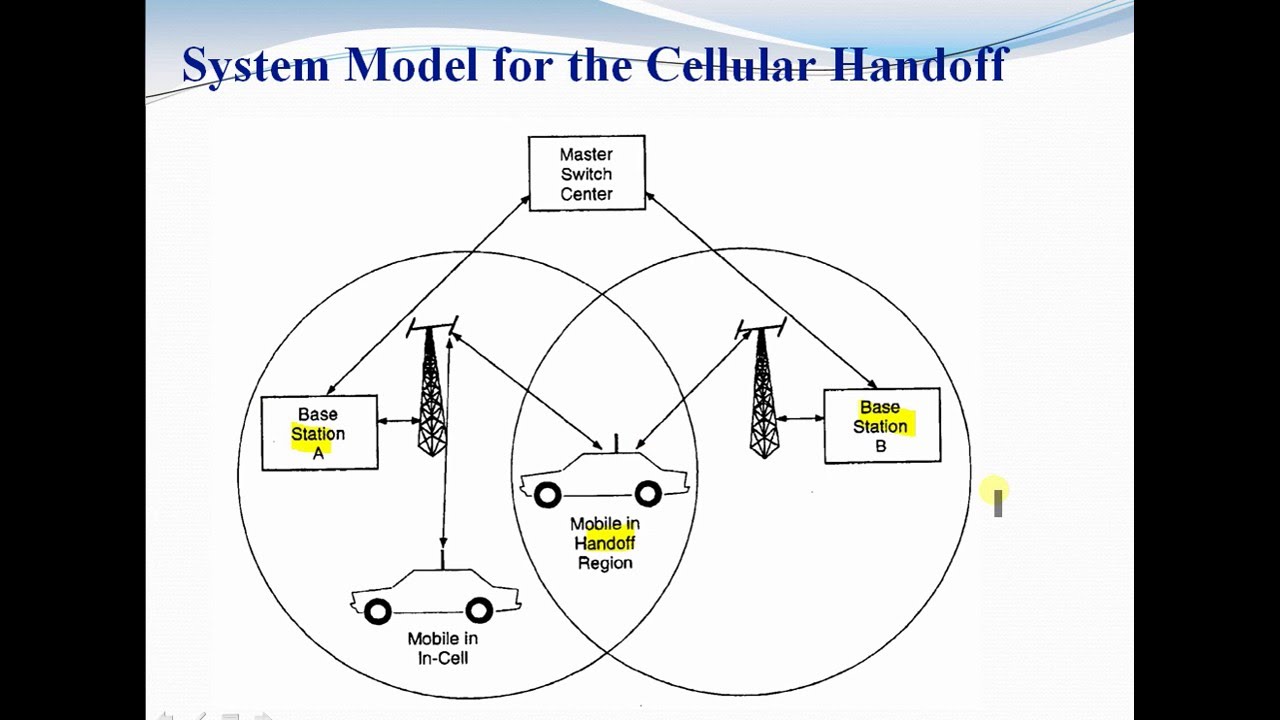
Handover and handoff are different words for the same idea.
The basics of mobile phone technology is that when a client is moving through the network, they wish to be continuously connected to a network. As mobile phone technology is based on a cell architecture, whilst moving through the network the client will move away from the influence of a cell and needs to be switched to another cell and potentially another network.
If the subscriber is alive, connected to the network but not sending or receiving a call or data then the handover is unnoticed by the subscriber.If the subscriber is sending data and a handover occurs then one or more packets could be lost, but this would just involve re-transmission and realistically unnoticed by the client. If a subscriber is mid phone call (or mid real-time data transfer) there is potential for the call / data to be lost or maybe a break in the transmission.
We can classify handover as either hard handover or soft handover
- Soft Handover - this is seamless handover where the phone and network realise the phone is moving away from the current cell and there is a more powerful cell on the same network, same MME in 4G terms. The network will move the hone from one eNodeB to an adjacent eNodeB on the same network. A soft handover is the preferred method of swapping from one paert pof a network to another.
- Hard Handover - this is called break before make handover meaning that the current connection is cut prior to the new connection made. Perhaps this is where the client has come to the edge of the current network and has to change network, change MME. The client is moved from one network provider to another (where netwrok roaming is allowed) or from one generation to another (4G to 2G).
There are a number of different reasons and types of handover :
- A subscriber moves nearer to another mast (eNodeB) still controlled by the same MSC.
- A subscriber moves out of range of a mast run by one MME and within range of a second MME.
- An eNodeB or MME is getting busy and the network tries to balance the demand by moving subscribers to another ENodeB or MME
- A subscriber on a 4G network wishes to make a call and does not have access to Vo-LTE, a switch will be made to a 2G network.
- Whilst (international) roaming, a stronger network comes into range. For example if holidaying in France, a client will be moved from one French mobile operator to another.
- Within the UK, if we had internal roaming, then a change of network would involve a hard handover
On a WiFi system, where mobility is not the norm, a device will stay connected to a particular router. If the device moves away then eventually the signal will be lost and the device will attempt to another network / router. There will be a break in transmission. Business WiFi systems or phone mesh systems do allow the change from one router to another, seamless to the client, essentially a soft handover.
© mobilephonetechnology.co.uk all rights reserved 2017-2025

